Papers by María José Estarán Tolosa

Alex Mullen, and Anna Willi (eds), Latinization, Local Languages, and Literacies in the Roman West (Oxford, 2024; online edn, Oxford Academic, 20 Nov. 2024), 2024
The chapter focuses on the southern and south-western regions of the Iberian Peninsula—namely, Re... more The chapter focuses on the southern and south-western regions of the Iberian Peninsula—namely, Republican Hispania Ulterior, which was later divided into the provinces of Baetica and Lusitania. These areas exhibit notable diversity: while some are highly urbanized and ‘Romanized’, others retain a more rural character and maintain a stronger indigenous influence. The limited number of epigraphic records from the Republican era is examined, with a special focus on those related to the local population, including coinage. From the time of Augustus onwards, written documentation increases significantly. However, while in Baetica this record reflects Roman customs, in Lusitania linguistic retention and bilingualism are evident, particularly in religious epigraphy. The factors that drove the process of Latinization, resulting in the spread of Latin as the dominant language, are identified, though the nature of the available evidence does not allow us to describe its regional variations.
Zeitschrift für Papyrologie und Epigraphik, 230, 2024

O. De Cazanove, M. J. Estarán Tolosa, "Religion, Language Maintenance, and Language Shift. Dedications, Cult Places, and Latinization in Roman Gaul", in A. Mullen (ed.), Social Factors in the Latinization of the Roman West, Oxford: OUP, 2023, 206-236. Social Factors in the Latinization of the Roman West, 2023
This chapter explores the role of religious practice in the linguistic changes of Roman-period Ga... more This chapter explores the role of religious practice in the linguistic changes of Roman-period Gaul, both as a conservative factor in the retention of the local language, Gaulish, and as a Latinizing factor. Epigraphic sources show that domain-based choices linked to religious practices can be a crucial factor for evaluating linguistic shift, generating complex and heterogeneous situations during the period where both local and Roman practices coexisted. We argue that in Gaul this transitional period lasted for longer than is usually assumed. These situations are illustrated with relevant case studies of epigraphic ensembles from Vieille-Toulouse and Alesia framed in their archaeological and sociolinguistic context, and a perspective on the pillar of the nautae, an enigmatic piece in the study of the Latinization of Gaul.

On the same in ter pret ative line, with regard to the provincial religion of the Roman Gaul, see... more On the same in ter pret ative line, with regard to the provincial religion of the Roman Gaul, see Derks (1998); Van Andringa (2002). 2 Scheid (2005). 3 The textual sources transcribe only quite exceptionally authentic ritual formulas, prayers, or protocols-for instance, those produced for the Arval Brotherhood or for the Secular Games. This is the case for Rome (Scheid 2007) and elsewhere in Italy (Iguvine Tables) (Weiss 2010). 4 While Augustine's testimony on the need for preaching in Punic is clear (Lepelley (2005), and particularly well highlighted in the case of Antoninus of Fussala (Lancel 1983; McLynn 2010), the same cannot be said about the testimony of Irenaeus of Lyon, who claims to use the 'barbarian dia lect' (βάρβαρον διάλεκτον) for the day to day affairs of his diocese (Irenaeus, Adversus Haereses I, praef. 3). This passage can be interpreted in various ways: most recently, for Rochette (2021), 231-48, the 'barbarian dialect' is nothing other than Latin, in a context of erudite Graeco Latin bilingualism. Estarán's work on this chapter was funded through the Fellowship Ramón y Cajal no.
Palaeohispanica. Revista sobre lenguas y culturas de la Hispania Antigua, 2020
La edición de los textos pertenecientes a las lenguas europeas antiguas (paleoeuropeas) se ha vis... more La edición de los textos pertenecientes a las lenguas europeas antiguas (paleoeuropeas) se ha visto condicionada por el avance experimentado en otras disciplinas que guardan gran relación con ella, así como por los progresos tecnológicos más recientes. En este capítulo se describe la historia de la aproximación científica a los textos de las antiguas lenguas de Europa, que parte del análisis más puramente textual y llega hasta la equilibrada interacción entre todos los campos. Este recorrido historiográfico se ha estructurado en tres etapas: desde los inicios en los siglos XVIII y XIX hasta la primera mitad del XX; la segunda mitad del XX y, por último, los comienzos del siglo XXI. Finalmente se contextualiza el aporte de la red AELAW y se sugieren algunas prospectivas de estudio.
Le multilinguisme dans la Méditerranée antique actes édités par Réjane Roure avec la collaboration de Sandra Lippert, Coline Ruiz Darasse et Éric Perrin-Saminadayar, 2023
Scienze dell'Antichità, 28, 2022
Linguarum Varietas, 2022
This paper aims to publish an ensemble of graffiti and tituli picti written in Italian amphorae f... more This paper aims to publish an ensemble of graffiti and tituli picti written in Italian amphorae found in the Eastern Spanish coast that have been interpreted as Latin or Punic until the present date and that, in our opinion, are written in Italic script. Even if they are so short that not much linguistic information can be inferred from them, these documents are very relevant because they confirm how wine trade gave way to establish narrow contacts between the Iberian and the Italic Peninsulae.
Revue des Études Anciennes, 2022
Lecture critique de : "Comment s’écrit l’autre ? Sources épigraphiques et papyrologiques dans le ... more Lecture critique de : "Comment s’écrit l’autre ? Sources épigraphiques et papyrologiques dans le monde méditerranéen antique. - C. Ruiz Darasse éd., Bordeaux, Ausonius éditions, 2020.
Palaeohispanica, 2009
El proyecto 'Hesperia'comenzó a desarrollarse en el año 1997 bajo la dirección de Javie... more El proyecto 'Hesperia'comenzó a desarrollarse en el año 1997 bajo la dirección de Javier de Hoz en el Departamento de Filología Griega y Lingüística Indoeuropea de la Universidad Complutense de Madrid y en la actualidad se realiza de forma coordinada entre equipos ...

This paper assesses the influencie of Greek and Roman epigraphy in religious dedications in Oscan... more This paper assesses the influencie of Greek and Roman epigraphy in religious dedications in Oscan, Gaulish and Palaeohispanic languages. In general terms, the diversity of Oscan peoples is highlighted, since Greek influence is much more perceivable in Southern Oscan epigraphy, not only regarding the writing system; but also as far as dedicatory formulae and textual typology are concerned; and, on the contrary, the influx of Roman epigraphy is clearly reflected in Central Oscan religious and publicly displayed inscriptions, especially from the 2nd cent. BCE onwards. It is in that moment when the number of evergetic inscriptions in cultic spaces increases, significantly in Pietrabbondante, where the calques of Roman formulary are evident. The influence of Rome in the development of public religious epigraphy is clear in Northern Oscan as well as in Hispania and Gaul; although the role of Greek epigraphy in some specific regions needs to be underlined and nuanced.
Chair of Ancient History and Archaeology, Faculty of History, Alexandru Ioan Cuza University of Iasi, Oct 5, 2021
This paper highlights the relevance of Lusitanian religious inscriptions as sources to help us re... more This paper highlights the relevance of Lusitanian religious inscriptions as sources to help us reconstruct the local language of the Northwestern Iberian Peninsula. Religious texts are the only epigraphic genre for which Lusitanian language was used. This linguistic choice could be understood in terms of linguistic retention for ritual reasons and / or because of the identification "community-language-religion", which is a well-documented phenomenon that generates mixed inscriptions with code-switching Latin-Lusitanian and Lusitanian inscriptions, not only in Lusitania (which is where the majority of the texts come from), but also in other regions of the Western Roman Empire.

Palaeohispanic Languages and Epigraphies, 2019
This chapter offers a comprehensive summary of the impact of the Roman conquest and subsequent co... more This chapter offers a comprehensive summary of the impact of the Roman conquest and subsequent colonization on the pre-Roman peoples of the Iberian peninsula and their epigraphy. After analysing the evolution of the earliest Roman inscriptions from Hispania and the strategies adopted by local elites to integrate within the new order, this study reflects the twofold effect of Roman epigraphic culture on the Palaeohispanic tradition: the adoption and new forms of use of Roman epigraphic supports by local peoples, directly linked to an increase in writing on non-perishable supports, and the spread of the Latin language and alphabet in indigenous texts, which was merely the written manifestation of a far-reaching linguistic process, materialized in multiple epigraphic phenomena reflecting a multilingual society. This phase of contacts was followed by another that clearly illustrated the disappearance of Palaeohispanic languages and scripts at varying rates, depending on the intensity of...
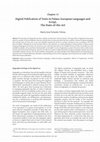
Epigraphy in the Digital Age, 2021
The discipline of Epigraphy has been rapidly transformed in the last decade. This huge effort of ... more The discipline of Epigraphy has been rapidly transformed in the last decade. This huge effort of digitisation has given place to a number of online databases that store mainly texts in Latin and Greek; but texts written in Palaeo-European languages and writings have not been yet, in my view, digitally treated and stored in a proper, satisfactory way, according to the FAIR Data Principles. Although lot of work has been done in this direction, an online publication of texts written in these ancient European languages has not been not carried out, since what has been done is not Findable (it lacks of URIs), Accessible (it is only readable by people; not by machines), Interoperable, or Reusable. In such a fragmentary corpus it becomes vital to collect every textual and extratextual information. However, the efforts invested in digitising Palaeo-European epigraphy latterly have been remarkable: Hesperia, LexLep, TIR, AELAW, and RIIG, among others, are some examples of the databases that currently playing an important role in the decipherment and better understanding of some of the languages and writings that were spoken in Europe before the Roman settlement.
Les dédicaces cultuelles sont un des principaux genres épigraphiques dans la plupart des langues ... more Les dédicaces cultuelles sont un des principaux genres épigraphiques dans la plupart des langues de l’ouest du bassin méditerranéen antique, y compris dans les langues d’attestation fragmentaire. Le présent volume, issu d’un colloque tenu à l’Academia Belgica à Rome les 18 et 19 mai 2017, est consacré à la visée pragmatique de ces textes, qui commémorent un acte de communication avec la divinité, tout en s’adressant à des êtres humains, en général membres de la même collectivité que l’auteur de l’acte cultuel commémoré. Nous souhaitons montrer la diversité des situations attestées dans l’ouest de l’aire méditerranéenne, à la fois ouverte aux échanges et extrêmement riche en cultures épigraphiques distinctes avant la généralisation des modèles latins.
Palaeohispanica. Revista sobre lenguas y culturas de la Hispania Antigua, 2019
El yacimiento Dehesa Cintruénigo III (Tarazona, Zaragoza) está siendo excavado por el Centro de E... more El yacimiento Dehesa Cintruénigo III (Tarazona, Zaragoza) está siendo excavado por el Centro de Estudios Turiasonenses y se corresponde con un antiguo lagar que comprende una zona de pisado sobre un lacus de tipo trullo, los restos de una prensa de viga manual de tipología heroniana y un espacio de almacenaje o cella vinaria, junto con dos salas más, también destinadas al almacenaje, anexo a lo cual se vislumbra un área dedicada posiblemente a vivienda que todavía queda por investigar. En este artículo se presenta un esgrafiado paleohispánico sobre cerámica Campaniense A, dos estampillas celtibéricas sobre tinaja y un esgrafiado latino en una vasija celtibérica hallados en las dependencias de este sitio arqueológico.
Archivo Español de Arqueología, 2019
En este artículo se analizan los criterios que llevaron a determinadas comunidades a grabar sus l... more En este artículo se analizan los criterios que llevaron a determinadas comunidades a grabar sus leyendas monetarias en una lengua diferente de la que registra la epigrafía coetánea, y se valora en qué casos esta elección lingüística responde a la necesidad de una construcción de la identidad y en cuáles esta decisión se debe a otro tipo de causas, vinculadas estrechamente con el cambio lingüístico que se produjo a lo largo de los dos últimos siglos a. C. y el primero d. C. en el occidente mediterráneo.
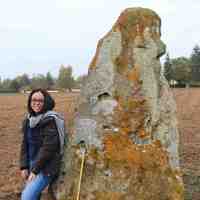
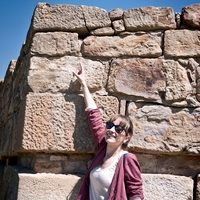

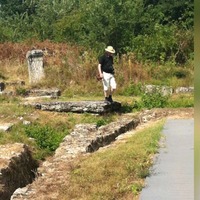



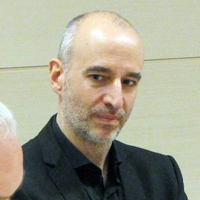


Uploads
Papers by María José Estarán Tolosa
Recoge las leyendas monetales redactadas en una lengua paleohispánica (fundamentalmente ibérico y celtibérico) tanto de la Península Ibérica cuanto del sureste de las Galias, incluidas las redactadas en latín y griego en las emisiones bilingües. Dada la controvertida lectura y adscripción lingüística de los rótulos “libiofenicios”, estos no son tomados en consideración.
Las fichas están ordenadas alfabéticamente y agrupan todos los rótulos monetales correspondientes a una misma ceca, designada convencionalmente mediante una o varias de las leyendas toponímicas más frecuente, independientemente de su morfología (p. ej.: untikesken, salduie, kalakorikos o turiazu). Cada ficha presenta cuatro apartados: “Generalidades”, “Leyendas”, “Lengua y escritura” y “Bibliografía”.
The fact that this formula appears in mid-Republican period means that there is a will of publicly displaying the concession of a favour by the divinity (obviously the concept of "uotum" existed much before its first epigraphical attestations, and it is possibly universally widespread). This humanissima ambitio (Plin. NH 34, 17) of ensuring one's memory through religious self-representation (but not only) was adopted in the provinces along with the Roman conquest and the expansion of Roman religion, where other kind of cults with a very different religious logic were professed, and the impact of Roman culture gave place to what we call today interpretatio Romana (although this term is normally applied to the identification of indigenous gods with Roman ones), generating a multitude of mixed religious beliefs and its expressions in the religious practice and the material culture.
My communication will deal with a particular feature of this set of entanglements, that is, the formulaic expression of the contract / relationship / vow with the deity documented in Palaeo-European and Latin inscriptions.
First, I will explore the standardisation of the expression of the religious communication in the Palaeo-European epigraphic cultures, where the vow sensu stricto is absent: what we find here are formulas with another kind of information, like thanksgiving (Osc. brateis datas), the offering of a tithe (Gaul. bratou dekanten, -m), or a believer's initiative of approaching the deity (?) (Ven. op voltio leno). Second, I propose to explain whether these formulas continue to be marked up after the death of Palaeo-European languages.3 Last, I propose to study the treatment of the Roman votive formula in bilingual inscriptions, where it is sometimes paralleled to the vernacular religious epigraphic formula, even when they are conceptually unrelated.
Durante los últimos cuatro años, el programa europeo COST ha financiado el proyecto AELAW (Ancient European Languages and Writings), destinado a promover y coordinar las investigaciones sobre estas lenguas y escrituras entre los investigadores europeos, con participación destacada de españoles e italianos.
Con el presente coloquio, organizado por la EEHAR y el proyecto AELAW, se afronta la recta final del propio proyecto. Se abordarán de manera individualizada cada una de las lenguas y epigrafías paleoeuropeas, así como los principales sistemas de escritura que utilizaron, y se analizará diacrónicamente el desarrollo de las culturas epigráficas entre el siglo VIII a. E. y el Imperio Romano. Además, se pondrán en común los retos y las posibilidades de estudio identificadas para cada una de estas lenguas, escrituras y culturas epigráficas. Con ello se busca, mediante el trabajo conjunto y transversal de reconocidos especialistas, proponer formas de avanzar en nuestro conocimiento y de desarrollar futuras líneas de trabajo.
Este congreso pretende sentar las bases para la redacción de una monografía en la que por primera vez se aborden de manera conjunta y multidisciplinar el tratamiento de las lenguas, las escrituras y las culturas epigráficas paleoeuropeas.
Reflejos del bilingüismo en época antigua los hallamos en las inscripciones en dos lenguas, en lenguas mixtas y en transliteraciones de la lengua vernácula en alfabeto latino. Pero ¿es posible reconocer situaciones de diglosia a partir de la documentación epigráfica? La comparación del lenguaje de inscripciones públicas y privadas coetáneas que se presentan en este póster, entre muchas otras, podría arrojar algo de luz en esta cuestión.
Potenza, 6 marzo 2020, ore 10:00
Museo Archeologico Provinciale "M. Lacava"
Via Ciccotti / Via Lazio, 18
Le iscrizioni del santuario di Macchia di Rossano di Vaglio sono i testi più antichi scoperti in Basilicata e costituiscono la testimonianza dell´osco, ossia della lingua parlata dalle popolazioni lucane e da quelle dell´Italia meridionale.
Nel santuario di Rossano di Vaglio è stato rinvenuto uno dei più importanti gruppi di testi scritti in questa antica lingua; si tratta di dediche alle divinità locali, tra le quali la dea Mefitis. La giornata di studio si pone l´obiettivo di illustrate la storia delle ricerche sul santuario, la sua valenza religiosa e l´importante contributo del suo corpus epigrafico per la conscenza della lingua osca e della sfera sacra e rituale dei Lucani.
Altro aspetto di discussione dell´evento riguarda il processo di musealizzazione di queste testimonianze materiali, attraverso la progettazione, lo studio e la realizzazione dell´allestimento e dell´esposizione per una fruizione più dinamica, tesa ad instaurare una connessione con il visitatore, coinvolto nella suggestiva narrazione di una storia della quale si sente protagonista.
Questo covegno, organizzato in collaborazione con la Escuela Española de Historia y Arqueología en Roma, è il culmine del progetto PEAI: Public Epigraphy in Ancient Italy (third-first centuries BCE), che è stato vincitore di una borsa Marie Sklodowska-Curie (European Union’s Horizon 2020, Grant agreement nº 794476) e che è stato svolto presso l´Università degli Studi di Roma Tor Vergata. L´incontro è anche possibile grazie alla collaborazione del Museo Nazionale Romano delle Terme di Diocleziano.
Organizzatori:
Ignacio Simón Cornago (Università degli Studi di Roma Tor Vergata)
Paolo Poccetti (Università degli Studi di Roma Tor Vergata)
Coordinatore:
José Ángel Zamora López (EEHAR – CSIC)
13-14 Febbraio 2020
giovedì 13, Escuela Española de Historia y Arqueología en Roma. Via di S. Eufemia 13
venerdì 14, Museo Nazionale Romano. Terme di Diocleziano. Viale Enrico de Nicola, 78
Those interested should send an abstract under 400 words to Dr. Lorena Pérez (loperezy@inst.uc3m.es) or Dr. Javier Herrera (jherrerarando@gmail.com) before 20th February 2023. Accepted papers will be announced before 15th March 2023.
More information at the conference website.
Les dédicaces cultuelles sont un des principaux genres épigraphiques dans la plupart des langues de l’ouest du bassin méditerranéen antique, y compris dans les langues d’attestation fragmentaire. Le présent volume, issu d’un colloque tenu à l’Academia Belgica à Rome les 18 et 19 mai 2017, est consacré à la visée pragmatique de ces textes, qui commémorent un acte de communication avec la divinité, tout en s’adressant à des êtres humains, en général membres de la même collectivité que l’auteur de l’acte cultuel commémoré. Nous souhaitons montrer la diversité des situations attestées dans l’ouest de l’aire méditerranéenne, à la fois ouverte aux échanges et extrêmement riche en cultures épigraphiques distinctes avant la généralisation des modèles latins.